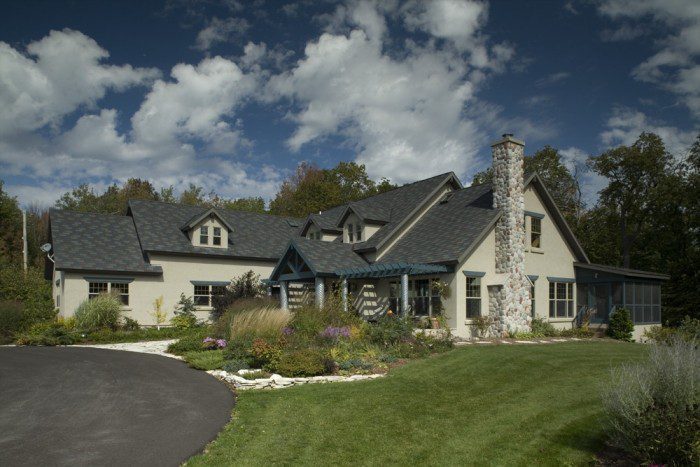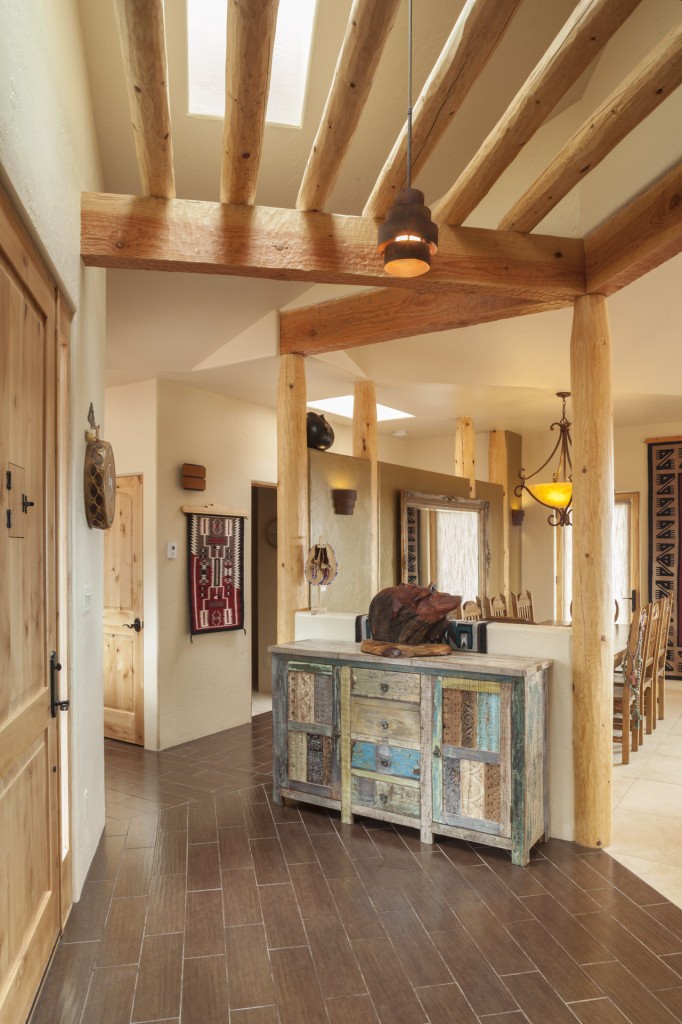A Pattern Language by Christopher Alexander

If you've ever had the opportunity to wander through an old European or Asian village, you’ve probably experienced "the feeling". These villages, with their quaint cottages and lush gardens, plazas and outdoor cafes, exude a subtle but powerful feeling; indefinable in just one word. "Cozy" might be a good start, or "comfortable" or "safe" or "inviting" or "cheerful." Look a little further and you'll see that these places draw people together, giving them areas to meet and to visit with one another. This feeling flows from the town square right into the homes. Homes in these older parts of the world are often smaller, more intimate and more in scale with the human form. In these homes you will find places to gather and places for privacy. These homes are soothing and comfortable, and are where people enjoy spending time.
Christopher Alexander grew up in Europe with that "indefinable feeling." Born in Vienna, Austria in 1936, Alexander was raised in England then moved to the United States in 1958 where he earned a PhD in Architecture from Harvard University. Alexander was struck by the lack of ‘soul’ in American architecture and couldn't help but wonder what it was about the older, European architecture of his childhood that made people feel good. Eventually, he assembled a group of architects and traveled the world to find out. The result was the codification of 253 architectural elements that give places "soul". These design elements are simple to the point of feeling intuitive, yet they are profound. Alexander and his team organized these elements into "patterns" and wrote the seminal book, A Pattern Language. This book covers everything from macro scale community and regional planning patterns to the design of homes and even patterns that describe colors and ornamentation. For those interested in building a custom home, the portion of the book that pertains to individual buildings begins with pattern 104.
There is no way to incorporate every pattern into any one project (and you wouldn't want to), but as you become familiar with the patterns, some will certainly appeal to you. Here are a few of our favorites:
#106 Positive Outdoor Spaces: When arranging a building, it is important to consider the interior spaces you are creating as well as the types of outdoor spaces this structure defines. It is possible, with a bit of consideration, to create outdoor spaces that are distinct and that have a sense of place. The architecture of the home can begin to create these spaces and they can be accentuated with trees, fences or trellises until they become “an entity with a positive quality.”
#107 Wings of Light: For a room to be naturally lit it must not be too deep, as the edges of the room opposite the windows become dark. To ensure that every room in a house has sufficient natural light it is important to consider the proportion of the rooms with regard to natural light. This leads to designs that “ramble” a bit and are composed of a series of wings rather than a big square footprint. This type of design also lends itself very well to creating positive outdoor spaces. When a room must be deep, design elements such as clerestory windows can help bring light into otherwise dark spaces.

#112 Entrance Transition: “The feeling of entering a building influences the way you feel inside the building. If the transition is too abrupt there is no feeling of arrival and the inside of the building fails to be an inner sanctum.” The design of transition spaces can lead to some interesting and beautiful architectural details. Identifying these spaces and the opportunities they present for creative design can lead to interesting solutions that make a home unique and beautiful.
#127 Intimacy Gradient: This pattern refers to the relationship of public and private space in a house. Just as with entrance transitions, there needs to be a transition that occurs between spaces as they progress from the most public to the most private parts of a house. A house with too little definition between these spaces can be awkward for owners and guests alike, whereas a house with a good intimacy gradient functions more elegantly.
#128 Indoor Sunlight: The sun is an extremely important element to consider in the design of a home. Sadly, it’s often overlooked. If the right rooms of a house are south-facing, they will be bright and cheery. If these rooms are incorrectly oriented, they can get too much sun when it isn’t wanted or be dark and gloomy. Good natural light not only affects the mood of a home, but it can have a dramatic effect on the amount of energy a home uses. This is a great example of a simple design opportunity that can serve multiple functions to great effect.
#159 Light On Two Sides Of Every Room: “This pattern, perhaps more than any other single pattern determines the success or failure of a room. The importance of this pattern lies partially in the social atmosphere it creates in the room. Rooms lit on two sides, with natural light, create less glare around people and objects; this lets us see things more intricately; and most important, it allows us to read in the details of the minute expressions that flash across the people’s faces, the motions of their hands… and thereby understand, the meaning they are after. The light on two sides allows people to understand each other.” This pattern, along with Wings Of Light, play a large role in how we design our homes. Light from at least two sides is an underlying goal that informs how and where rooms are positioned. In spaces that cannot have exterior windows on two sides, we have developed many different strategies to still achieve this important goal.
#163 Outdoor Room: A garden or yard is a nice outdoor space, but the activities that occur there are typically more active and public. Having a comfortable outdoor space that is sheltered by walls and creates the literal feeling of a room, provides an opportunity to be outside while still serving the function of an indoor space. Some climates are better than others for these spaces, but when it makes sense, an outdoor room is a wonderful addition.
#181 The Fire: There is nothing that sets the mood of a room quite like a fireplace or wood stove. Fire provides a sense of life and, if positioned correctly, can be the warm flickering heart of a home. In areas with easy access to firewood, an efficient wood stove can be very cost effective and more than sufficient to keep a well insulated house comfortable throughout the winter.
#185 Sitting Circle: Some seating arrangements are sterile, others gather people naturally. The size of the room, the height of the ceiling and the distance between people are all considerations. It is important to position these gathering spaces away from traffic such that the circle isn’t cut through with the circulation pattern. Similar to an eddy in a river that collects driftwood, a well designed sitting circle will naturally collect people. Most often, the living room is the social focal point of a home and is intended to facilitate the sitting circle. Sadly, it is not uncommon for this area to be designed incorrectly, which creates a space that people avoid rather than gather in. Understanding the Sitting Circle pattern is absolutely critical in order to design a successful living room.
The Evolution Of A Pattern Language
Following A Pattern Language, there have been many books written by Christopher Alexander and his disciples. The book Patterns of Home was written by a group of architects who worked with Alexander's patterns for many years. This book elaborates on ten of the patterns they believe are most important for residential design. With its many large, color photographs, Patterns of Home is a great visual introduction to Alexander's work. If you get hooked, you might enjoy reading A Pattern Language. It is a bit more academic in style and is a bit more dry reading, but the insights are brilliant. A Pattern Language has informed our designs at Sunlight Homes from the very beginning and continues to this day.
A Pattern Language has informed our designs at Sunlight Homes from the very beginning and continues to this day. Once you become familiar with Alexander's patterns you'll never look at architecture or home design the same way again.
